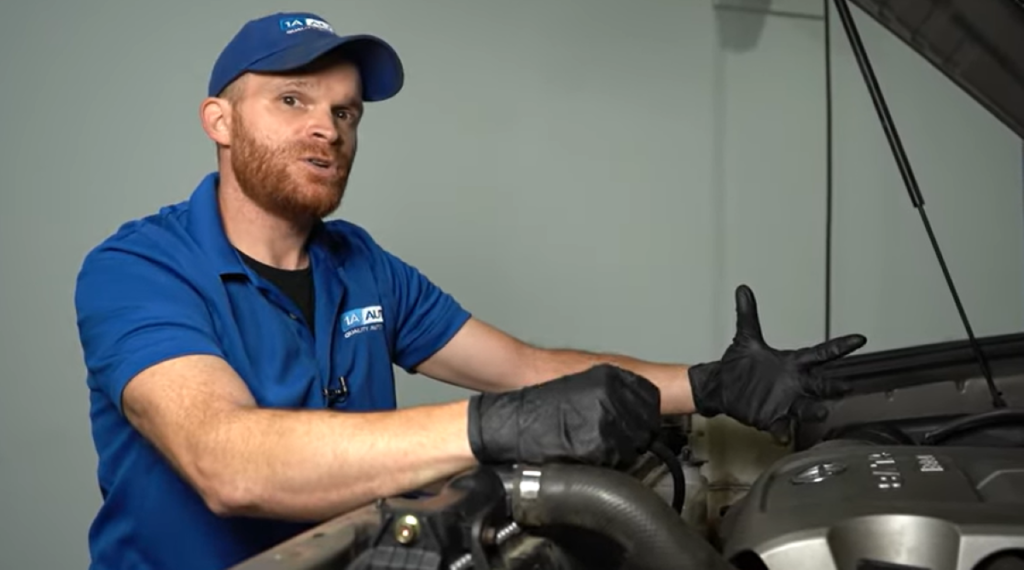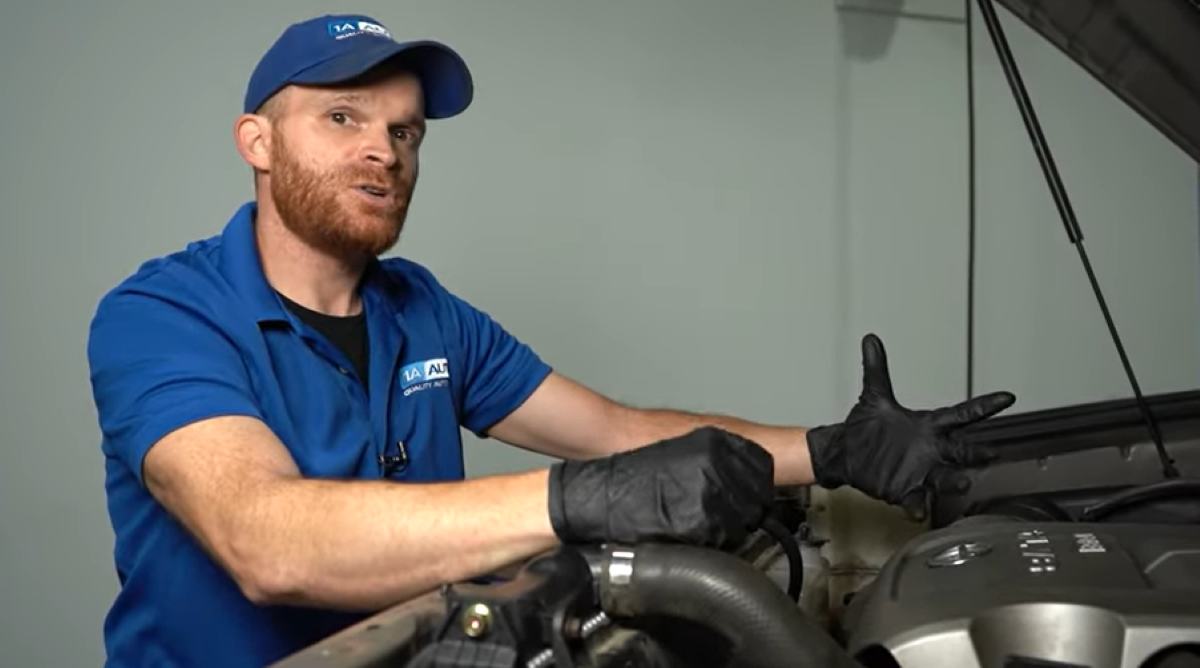The 3UR-FE 5.7 liter engine has been available in a few Toyota models. Find out the common symptoms, causes, and fixes for the top 5.7 liter Toyota engine problems that owners have run into.
Common Problems with the 5.7 Liter Engine in the 2007 to 2021 Toyota Tundra

1. Oil Leaks
Symptoms of Oil Leaks
- Oil leaking from the engine
- Burning oil smell
- Ticking sound from engine
Causes of Oil Leaks
Toyota’s 5.7-liter engine’s valve cover breaks down over time and tends to leak, and it can be identified by debris and oil leaking from the cover. Oil also tends to leak from the gasket between the engine block and the cam tower. If you hear a ticking noise, it’s because the engine oil level is low.
How to Fix Oil Leaks
The valve cover can be accessed from the wheel well. The cam tower is underneath the valve cover and connects to the engine block.
If the cam tower is leaking, it will take some expertise to replace. Fixing a cam tower leak is a detailed repair that requires removing the top of the engine, the timing chain, and the cam tower. The vehicle will also need to be timed after the repair is completed. Timing an engine can take hours and is expensive to have a professional do. The cam tower also uses something similar to a gasket that requires spreading and torqueing to the right specifications.
To catch leaks and prevent them from causing more damage, frequently check the oil level. Not catching an oil leak early can lead to more issues.
2. Water Pump Problems on the 2007 to 2021 5.7 Liter Toyota Tundra Engine
Symptoms of Water Pump Failure
- Engine overheating
- Cool air from the vents despite heating settings
- Coolant leak
Causes of Water Pump Failure
The water pump’s interior bearings tend to fail. This can create movement in the water pump and cause a coolant leak. It may also cause problems with the water pump’s ability to spin, which can affect the flow of coolant and cause overheating.
How to Fix Water Pump Failure
Not fixing a cooling issue with the engine can cause engine damage. The water pump is located on the front of the engine and is part of the belt timing system. It is not a hard job to do but it can take time to complete. Steps to replace the water pump include draining the coolant, removing the belt, removing the fan, and removing the water pump pulley, thermostat housing, and mounting bolts. After inspecting the water pump and before installing it, clean that area of the engine.
3. Secondary Air Injection Pump Failure
Symptoms of a Bad Secondary Air Injection Pump
- Check engine light is on
- Poor fuel economy
- Runability issues
Causes of Secondary Air Injection Pump Failure
The secondary air injection pumps turns on after the engine has been started. These help warm up the engine faster and reduce emissions expelled from the tail pipe. They draw in air from the tubes and into the pump where a propeller circulates the air to the valves in the engine. Moisture and debris can accumulate inside the induction tubes and get into the pumps and possibly damage them. Once the moisture or debris is circulated into the engine, it can also damage the valves.
How to Fix Secondary Air Injection Pump Failure
Access the two secondary air injection pumps from the passenger side wheel well. Fixing the tube and clearing it of debris can fix the check engine light, but if the check engine light is on and you experience more problems like poor fuel economy, the pumps will need to be replaced. The valves can also get damaged, so they might also need to be replaced, which requires removing the top of the engine.
To prevent this from happening, replace the inlet tubes with updated ones to keep moisture and debris from getting inside.

How-To Videos: Learn to Fix More Than Toyota 5.7 Liter Engine Problems
Follow the tips and instructions from our expert mechanics in our how-to videos and learn how to diagnose and replace parts on your car yourself.
Get More Tips
- Top 3 5.3-liter Chevy Engine Problems
- Common Chevy 6.0 Engine Problems
- What Does a Bad Wheel Bearing Sound Like?
- What Is a Wheel Bearing?
Shop Parts and Tools

